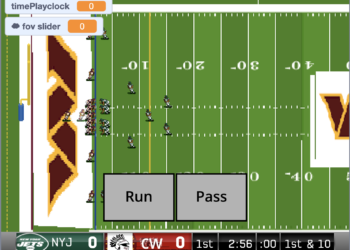Source: https://retropingpong.org/
Retro Ping Pong: Relive the Classic Arcade Experience
Discover the origins, gameplay, and enduring appeal of Retro Ping Pong, the game that kickstarted the video gaming revolution.
Introduction
Retro Ping Pong, often simply known as Pong, is one of the most iconic video games in history. Launched in 1972 by Atari, this minimalist table tennis simulation became the cornerstone of the arcade gaming industry. Its simple yet addictive gameplay captivated audiences worldwide, laying the foundation for the modern gaming landscape. In this article, we’ll delve into the rich history of Retro Ping Pong, explore its gameplay mechanics, and explain why it remains a beloved classic today.
The Origins of Retro Ping Pong
A Revolutionary Concept
- Developer: Atari Inc.
- Release Date: November 29, 1972
- Creators: Allan Alcorn (engineer and designer), under the direction of Nolan Bushnell and Ted Dabney
Retro Ping Pong was conceived as a training exercise for Atari engineer Allan Alcorn. Inspired by the table tennis game on the Magnavox Odyssey, Atari’s founders Nolan Bushnell and Ted Dabney challenged Alcorn to create a simple game that could test his skills. The result was Pong, a game so engaging that it quickly transitioned from a mere experiment to a commercial product.
The Arcade Phenomenon
The first Pong arcade cabinet was installed at Andy Capp’s Tavern in Sunnyvale, California. It became an instant hit, often malfunctioning due to the coin collector overflowing with quarters. Recognizing its potential, Atari began mass-producing Pong machines, igniting the arcade craze of the 1970s.
Gameplay Mechanics
Simple Yet Addictive
- Objective: Use your paddle to hit the ball past your opponent’s paddle.
- Controls: Players rotate a dial (paddle controller) to move their on-screen paddle vertically.
- Scoring: First player to reach 11 points wins the game.
The simplicity of Retro Ping Pong is a key factor in its enduring popularity. With straightforward controls and easy-to-understand objectives, it appeals to players of all ages and skill levels.
Physics and Dynamics
Despite its minimalistic design, Pong incorporates basic physics principles:
- Angle of Deflection: The ball’s trajectory changes based on where it hits the paddle.
- Increasing Speed: The ball speeds up after each successful volley, intensifying the challenge.
Impact on the Gaming Industry
Pioneering the Arcade Era
Retro Ping Pong’s success demonstrated the commercial viability of video games, leading to:
- Proliferation of Arcades: Establishing arcades as popular entertainment venues.
- Inspiration for Developers: Encouraging the creation of more complex and diverse games.
- Home Console Market: Spurring the development of home gaming consoles like the Atari 2600.
Cultural Significance
Pong became a cultural icon, symbolizing the dawn of the digital age. It has been featured in:
- Films and Television: Appearances in movies like “Tron” and shows like “The Simpsons.”
- Art Exhibitions: Showcased in museums as a piece of technological art.
- Competitive Gaming: Early tournaments and competitions centered around Pong.
Retro Ping Pong Today
Modern Accessibility
Retro Ping Pong has been revived through various platforms:
Mobile Apps
- iOS and Android: Download versions like Atari Pong or Classic Pong from app stores.
- Enhanced Features: Some apps offer updated graphics, soundtracks, and multiplayer modes.
Console Releases
- Atari Flashback Consoles: Pre-loaded with Pong and other classic games.
- Modern Consoles: Available on platforms like Nintendo Switch and PlayStation through retro game collections.
Remakes and Tributes
Developers continue to honor Pong’s legacy with remakes and inspired titles:
- Pong Quest (2020): Combines classic Pong gameplay with role-playing elements.
- Shatter (2009): A modern take on brick-breaking games influenced by Pong’s mechanics.
Why Retro Ping Pong Remains Popular
Nostalgic Appeal
- Simplicity: Easy to learn, hard to master.
- Childhood Memories: Evokes nostalgia for those who grew up during the golden age of arcades.
Competitive Fun
- Multiplayer Experience: Encourages social interaction and friendly competition.
- Skill-Based Gameplay: Rewards reflexes and strategic thinking over luck.
Educational Value
- Introduction to Gaming: Serves as an entry point for understanding game design and physics.
- Historical Significance: Offers insight into the origins of the video game industry.
Tips for Mastering Retro Ping Pong
- Anticipate the Ball’s Trajectory: Watch the angle at which the ball hits your paddle to predict its path.
- Control Paddle Movement: Smooth, precise movements are more effective than rapid, erratic ones.
- Use the Paddle’s Edges: Hitting the ball with different parts of your paddle alters its angle, making it harder for opponents to return.
- Stay Focused: As the ball speeds up, maintaining concentration is key.
- Practice: Regular play enhances reflexes and improves overall performance.
Conclusion
Retro Ping Pong is more than just a game; it’s a monumental piece of entertainment history. Its straightforward gameplay and profound impact on the gaming industry make it a timeless classic. Whether you’re a seasoned gamer or new to the scene, Pong offers an enjoyable experience that bridges generations.

































